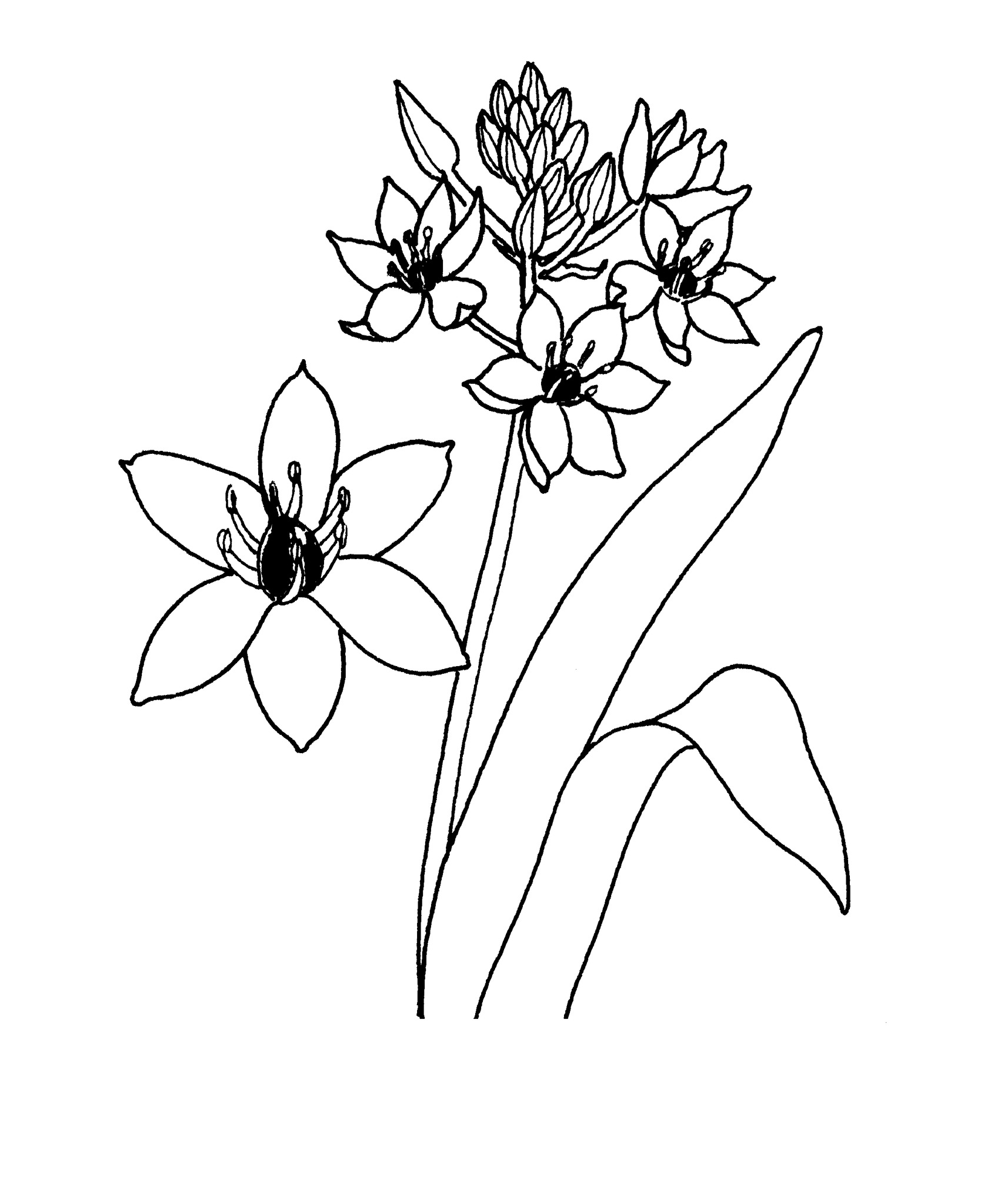
Greek ornithos – a bird, gala – milk, thought to refer to the pale egg-shell colour of the tepals.
Perennial, bulbous herb. Leaves basal, often with a white stripe on the midvein. Flowers radially symmetrical, star-shaped, stalked, individual flower stalks not articulated. Inflorescence a terminal umbel- or head-like raceme with large floral bracts. Tepals 3+3, 1-nerved, nerve generally green externally, free. Stamens 6, attached to tepal bases, filaments flattened. Ovary superior, often 2-ridged. Fruit a thin-walled capsule. Seeds globose to oblong, black.
The generic limits are disputed, and some species, especially those from South Africa are sometimes segregated into other genera such as Eliokarmos, Stellarioides and Zaharidia (Speta 1998).
Generally grown in full sun to light shade on well-drained soils.
About 160 species mostly from temperate and Mediterranean Europe to Asia Minor, and in southern and eastern Africa.
Bulb with terminal umbels or heads with large bracts, starry, white, often externally green-nerved flowers and thin-walled capsules.
Meyer et al. (1991).
Source: (2005). Ledebouria. In: . Horticultural Flora of South-eastern Australia. Volume 5. Flowering plants. Monocotyledons. The identification of garden and cultivated plants. University of New South Wales Press.
